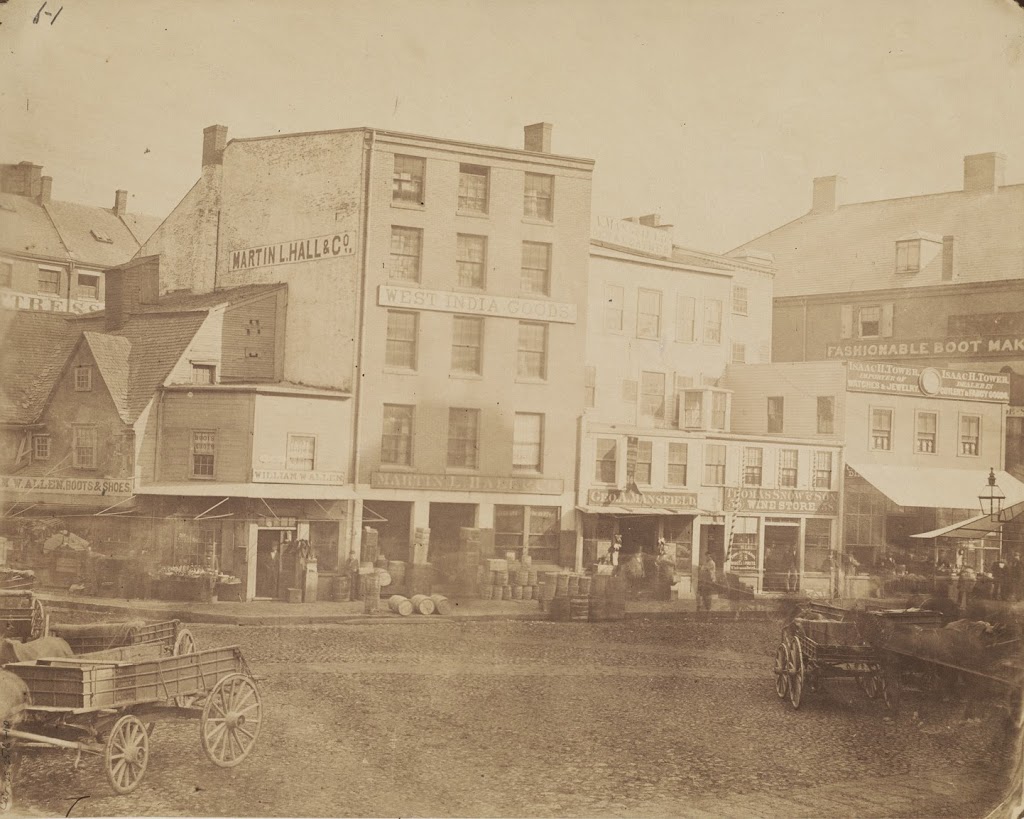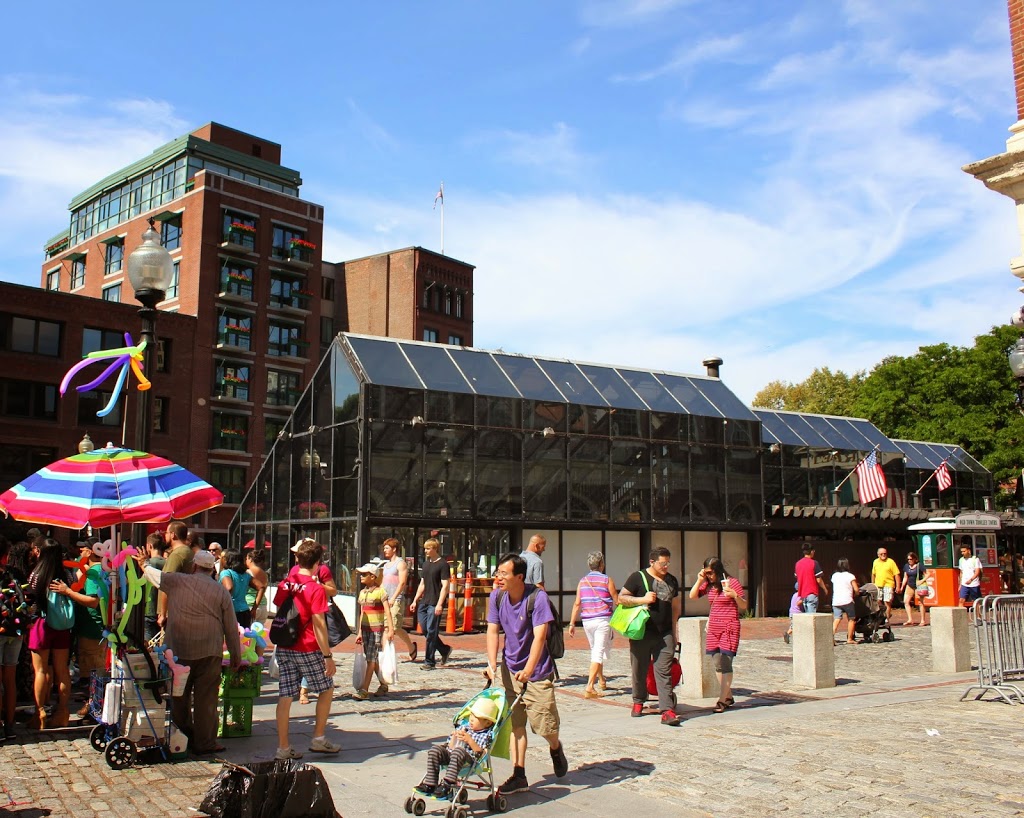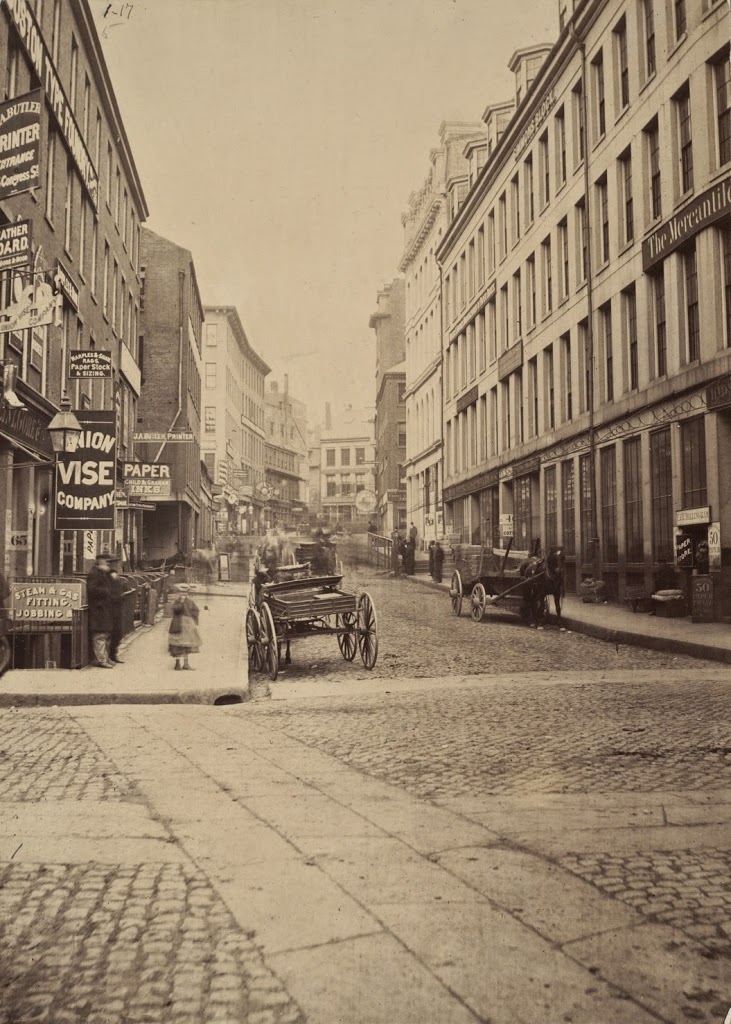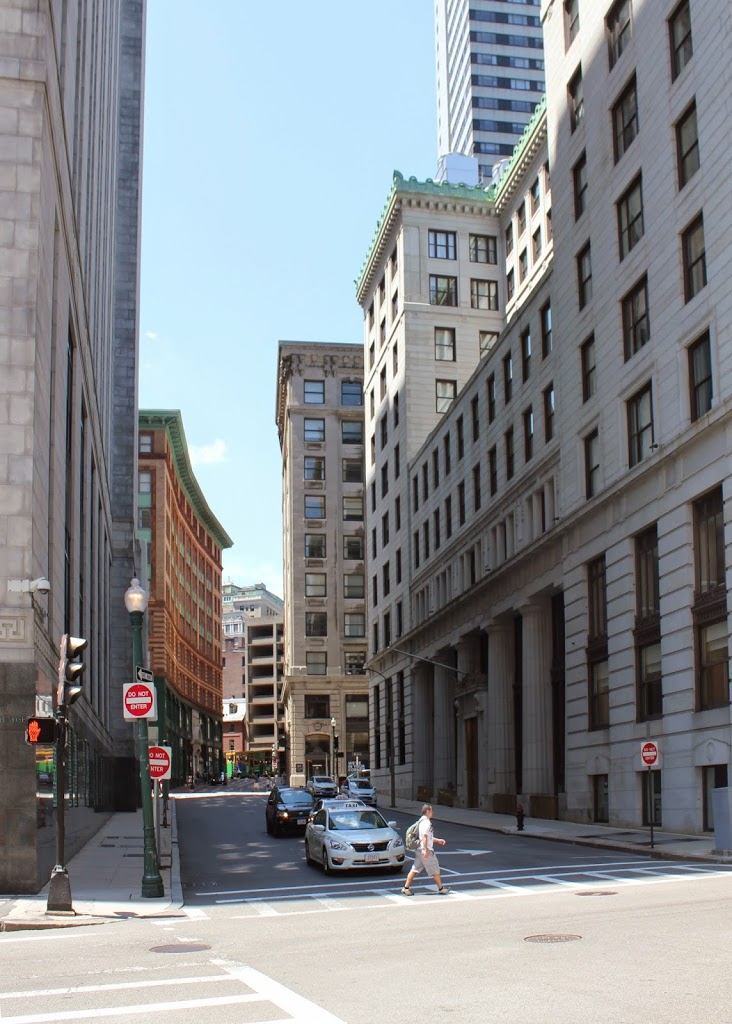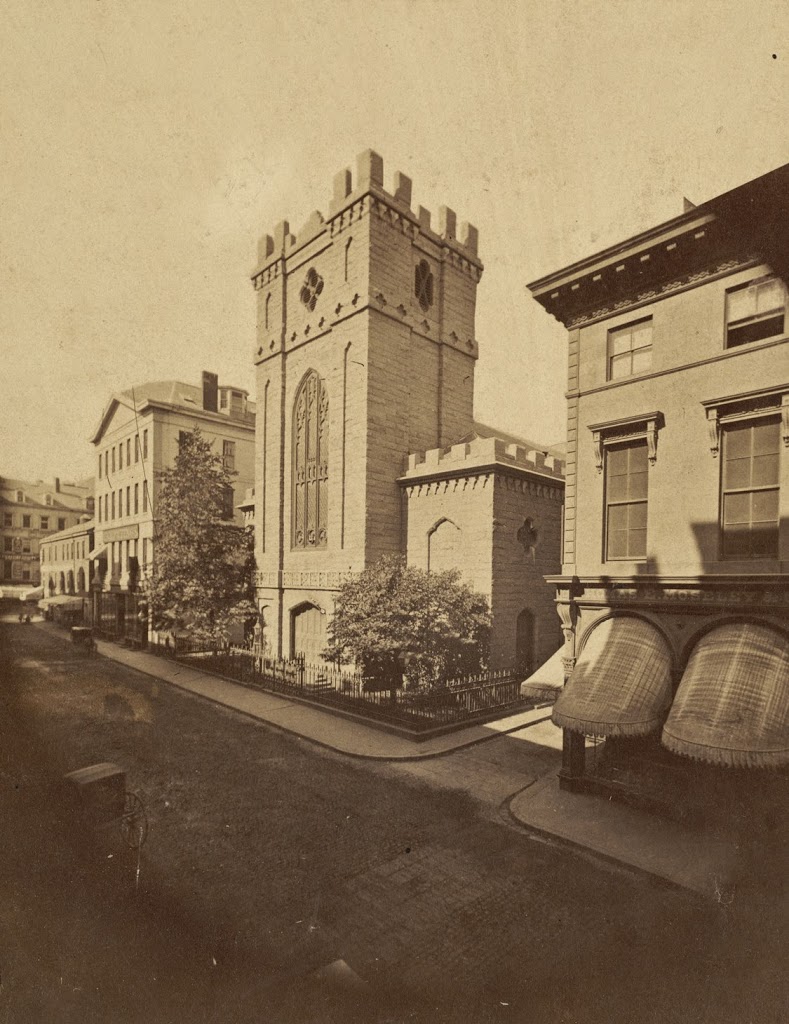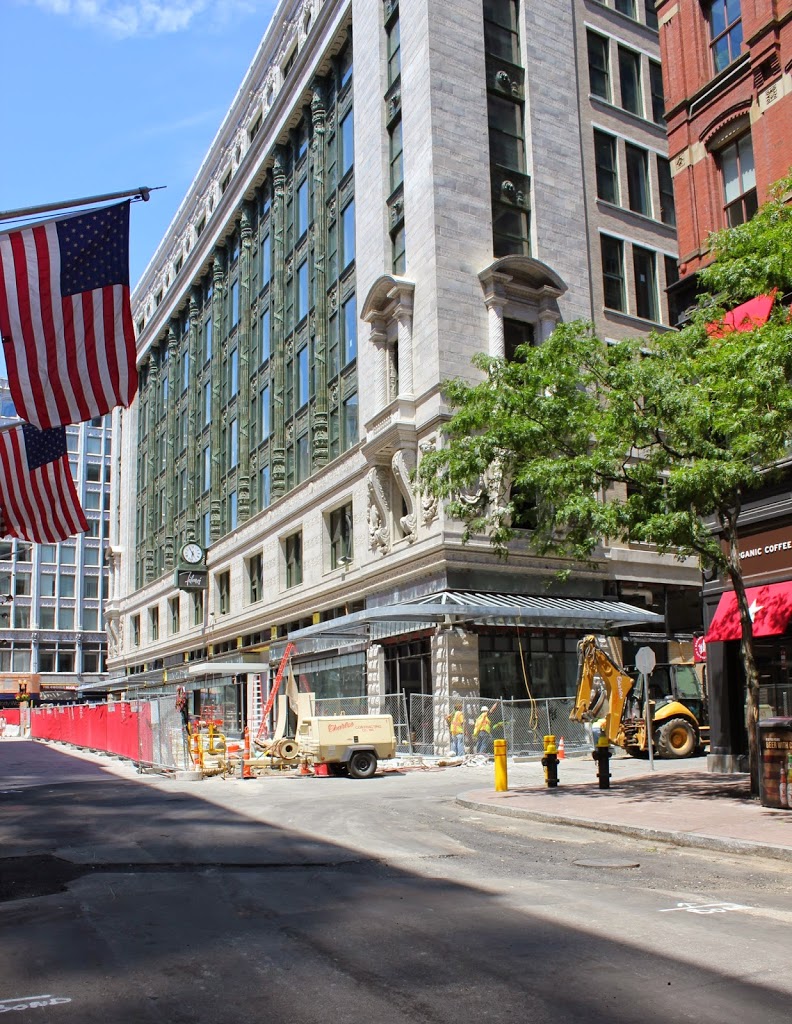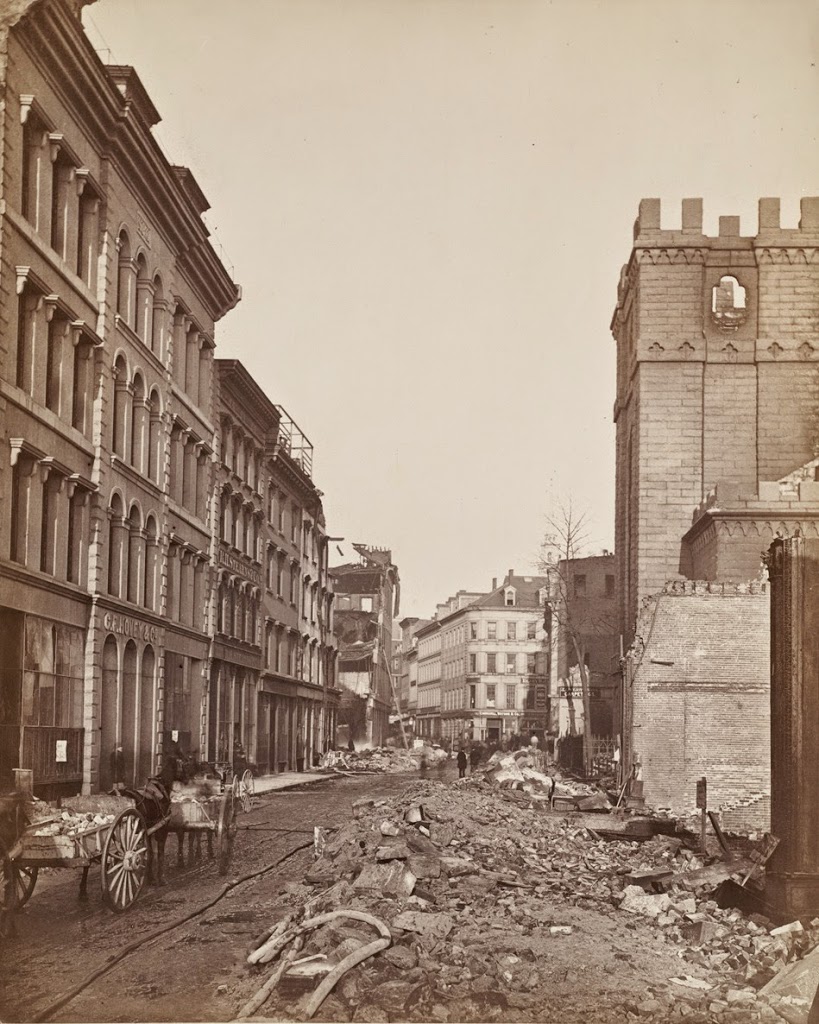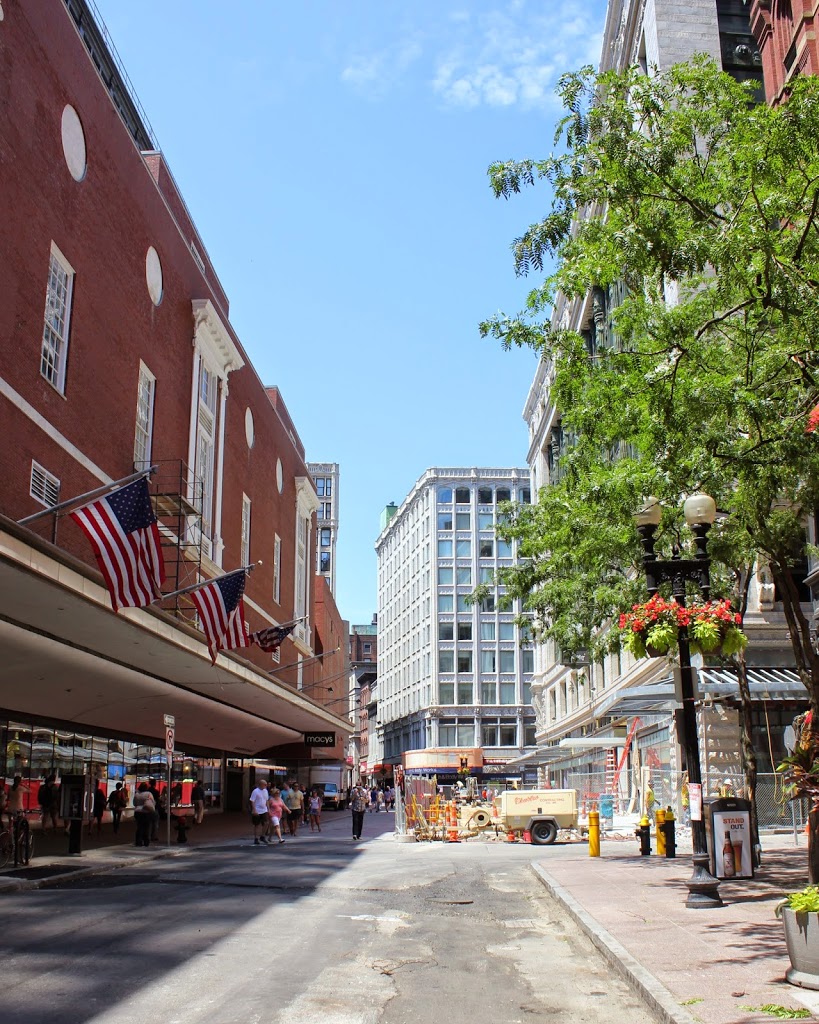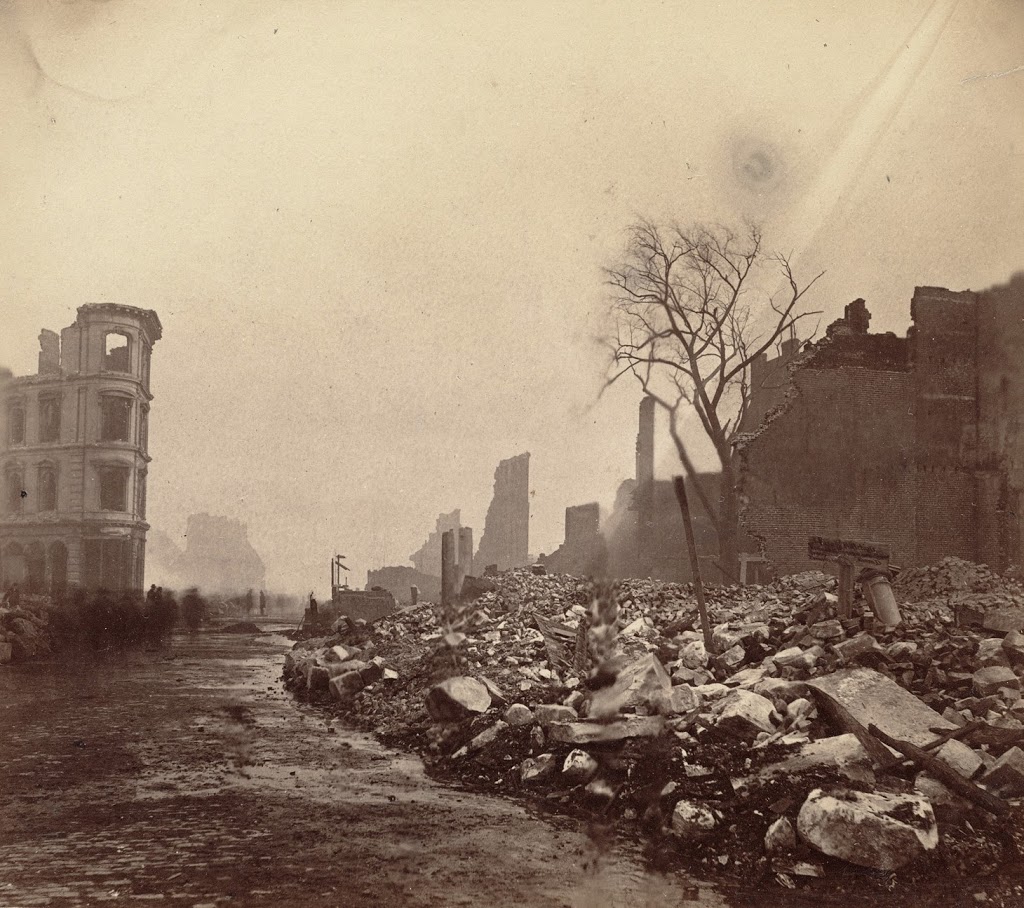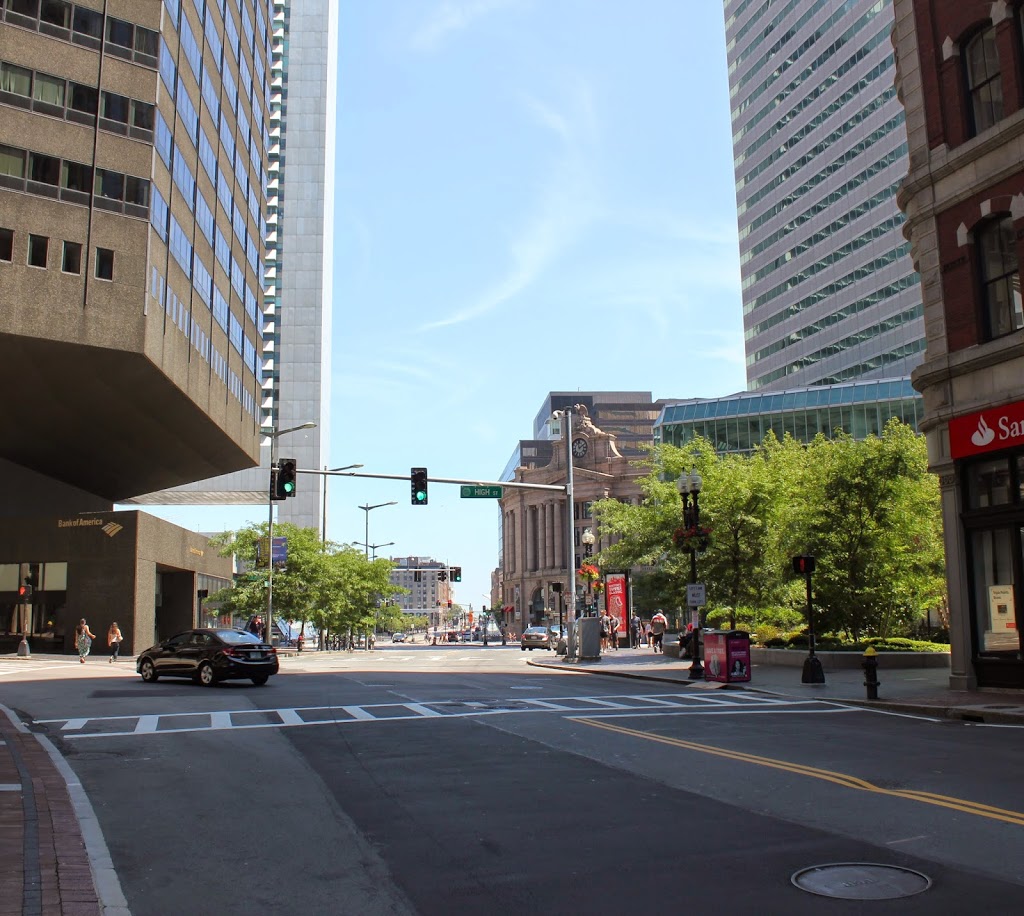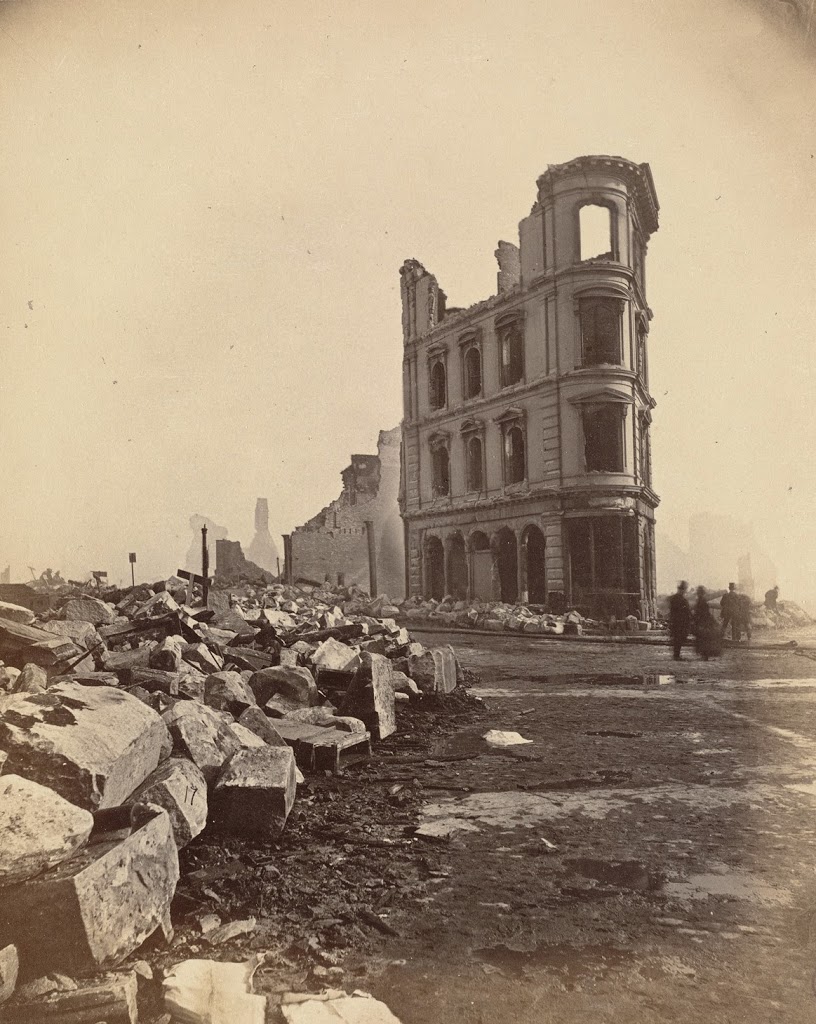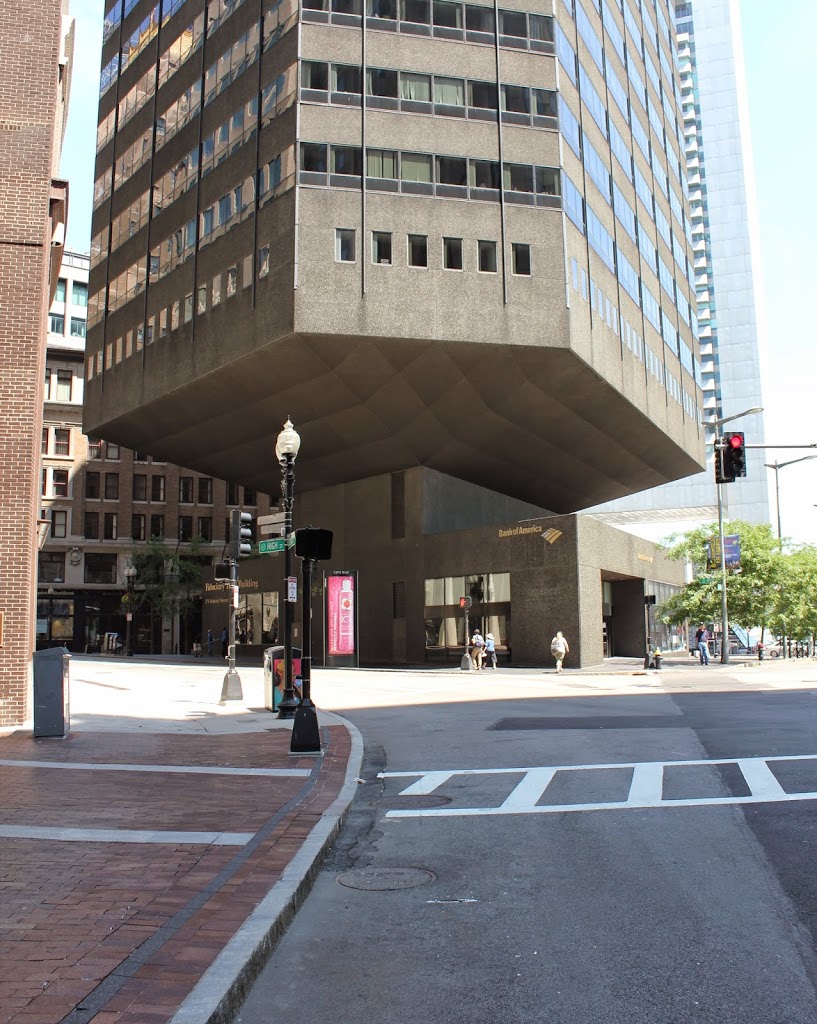North Market in Boston, next to Quincy Market, around 1855. Photo courtesy of Boston Public Library.
The scene in 2014:
These photos show the same scene as the ones in this post, just from a different angle. The building on the far left of the 1855 photo is the Old Feather Shop, the same one seen in the photo in the other post. Built in 1680, it was demolished around 1860, soon after the first photo was taken. Both pictures were taken from right in front of Faneuil Hall (which can be seen on the far right of the 2014 photo), and this area has been a major commercial center since the 1600s, when it was known as Dock Square. Today, most of the commercial activity centers around tourism, and the location is adjacent to Quincy Market and along the Freedom Trail. The red brick path of the Freedom Trail can be seen in the foreground of the 2014 photo.

